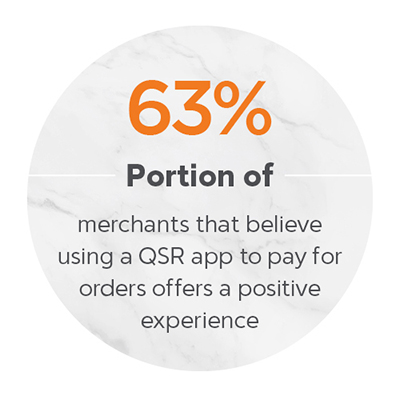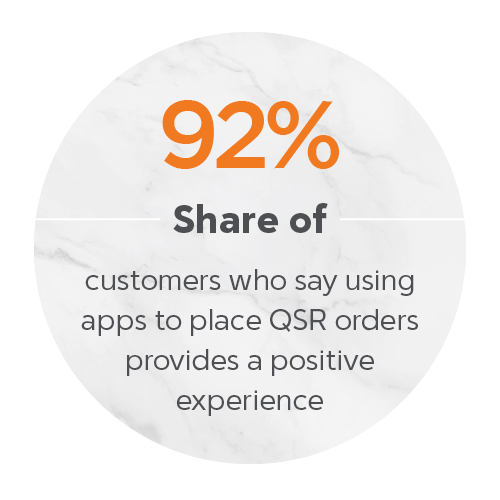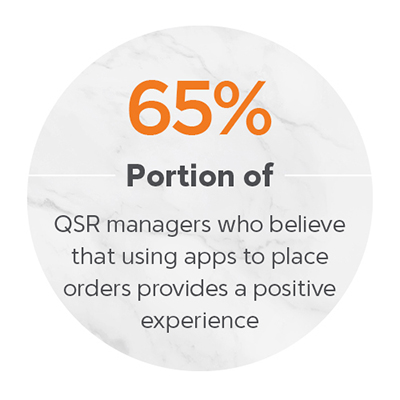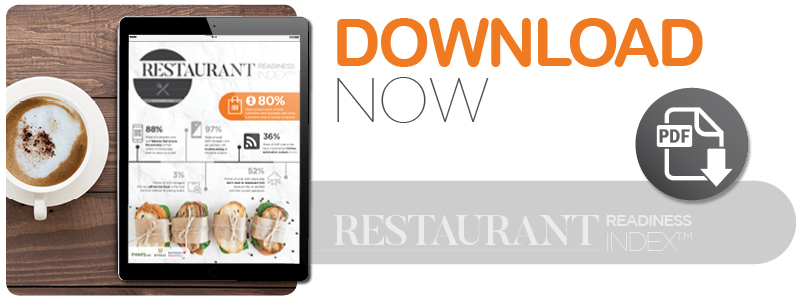Digital Divide: QSR Managers And Consumers Face Nearly 30-Point Gap On Innovation Preferences

While quick-service restaurant (QSR) managers and customers might view the same menu, they might not always be on the same page when it comes to technology and innovation. When today’s connected consumers mosey into a QSR, they expect to find more than their favorite food, drinks and snacks on the menu — they also expect to use the latest technology to place orders.
 However, a look at recent data found that many QSRs are not exactly quick to implement customers’ preferred innovations. While certain technologies — including self-service kiosks and mobile apps — have generated plenty of hype, many have been slow to adopt these technologies, believing they are not what customers want.
However, a look at recent data found that many QSRs are not exactly quick to implement customers’ preferred innovations. While certain technologies — including self-service kiosks and mobile apps — have generated plenty of hype, many have been slow to adopt these technologies, believing they are not what customers want.
Mobile app technology highlights the differences in attitudes between QSRs and customers. Sixty-five percent of QSRs with mobile apps for ordering believe the tech offers a positive experience, far less than the 92 percent of customers who said the same.
QSRs, though, do not appear to be implementing the innovations that customers want the most, nor are they doing so quickly enough, according to the latest PYMNTS Restaurant Readiness Index, a collaboration with Bypass and Bank of America Merchant Services. The Index examined 400 QSR  manager responses to find that the average restaurant score was 38.7 on a scale of zero to 100, despite a majority of customers reporting a positive experience from tech features.
manager responses to find that the average restaurant score was 38.7 on a scale of zero to 100, despite a majority of customers reporting a positive experience from tech features.
Other notable data points included in the Restaurant Readiness Index:
- Eighty percent of both QSR managers and customers had a positive view of loyalty programs.
- Ninety-two percent of customers considered using a QSR app to pay for orders to be a positive experience.
- Only 3 percent of QSR managers said a self-service kiosk is the most common way for customers to place orders.
- Roughly 90 percent of both QSR managers and customers said paying with credit cards is a positive experience.
 While the adoption of different technologies varies around the space, one particular type of innovation — a kitchen automation system (KAS) — appears to have the QSR market divided. These systems aim to improve service by displaying orders in real time to kitchen staff, but implementation often varies based on the size of a QSR. The Index includes a Deep Dive that explores how QSRs and restaurant chains have approached the integration of KAS’ into their own operations.
While the adoption of different technologies varies around the space, one particular type of innovation — a kitchen automation system (KAS) — appears to have the QSR market divided. These systems aim to improve service by displaying orders in real time to kitchen staff, but implementation often varies based on the size of a QSR. The Index includes a Deep Dive that explores how QSRs and restaurant chains have approached the integration of KAS’ into their own operations.
Download the Index to find the Deep Dive and over 500 data points that outline how successfully QSRs are feeding customers’ appetites for technology and convenience.
About The Restaurant Readiness Index
The PYMNTS Restaurant Readiness Index, a Bypass and Bank of America Merchant Services collaboration, is designed to analyze how QSRs are doing when it comes to innovation. Namely, are they being innovative, and are technological features enhancing customer experiences? The latest Index is based on more than 3,500 responses from 400 QSR managers to find the answers.

